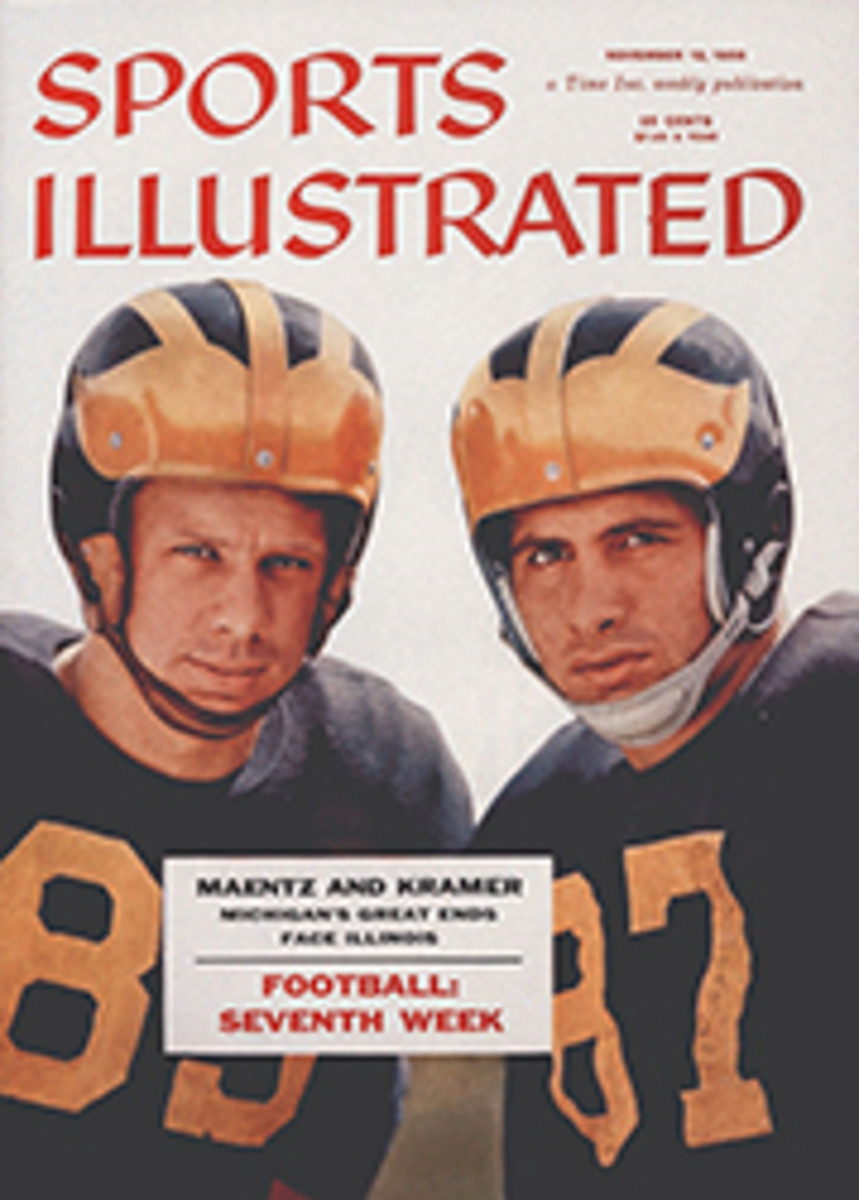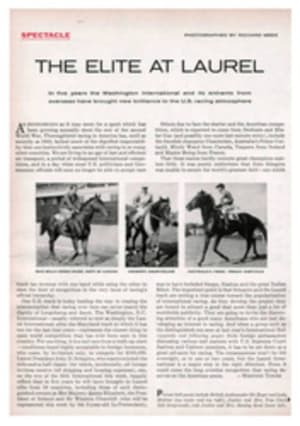
YOU SHOULD KNOW: HERMAN HICKMAN shows how to get more pleasure out of football by understanding the intricate pass patterns of single-wing football
Most passingattacks, whether they be run from a single wing or some version of the T, arebuilt on one of—or a combination of—three basic techniques. They attempt tobeat the defensive players by:
1 INDIVIDUALMANEUVERS AND STUNTS.
This is best accomplished by setting the ends and/or backs as wide flankers.This alignment isolates the defender who must play wide as a precaution andthus practically forces the defense into a man-for-man arrangement. Thereceiver then hopes to get clear of his opposing defender with some kind ofstunt.
2 PATTERNPASSES.
In this maneuver a particular zone is "flooded" by at least three andsometimes four receivers. One may go to the flat, one may hook in in front ofthe defending halfback and another go behind him, while still a fourth mightblock, delay and slip into an open spot vacated by the secondary. The passerlooks over the field without any intent to conceal the fact that it is a pass,picks out the "open" man and throws to him.
3 RUNNING-PLAYPASSES.
The latest trendin football is to design pass plays that look exactly like the team's strongestrunning plays. This type of pass serves two purposes. First it locks a fastpursuing defense and also it prevents any concentrated rushing.
An excellentexample of a running-play pass will be on exhibit this weekend when Michiganshows Illinois its buck-lateral pass from the single-wing formation with thewingback deep.
The passvariation on the play stems from Michigan's famous buck-lateral series, sonamed because the ball is snapped to the fullback, who drives into the line. Hemay fake giving it to the quarterback and "keep" on a trap play. He maygive to the quarterback who can run off tackle to the strong side; feed to theright halfback on a reverse play; hand off to the left end on an end-around runor an end-around pass; throw a quick jump pass; or flip back to the lefthalfback for either an end run to the strong side or the buck-lateral pass, asillustrated by the football manikins below. These are just a few of thedeceptive maneuvers of this series, which is also used by Michigan State andPrinceton. The running plays alone are challenge enough to any defensivescheme, but with the pass as an added fillip it seems almost unfair—especiallywhen the team is lucky enough to have two such fine pass-catching ends as RonKramer and Tom Maentz, shown on this week's cover.
The Tennesseesingle-wing passing attack, one of whose plays is shown in the other manikinillustration, is probably less versatile, but it too relies heavily onrunning-play passes. The accent here is on timing, faking and perfection ofmovement—all built around the tailback, who is the heart and soul of theTennessee single-wing system. The same is true of the other major proponents ofthis style of attack—UCLA, Oregon State and Wyoming. Phil Dickens, the Wyomingcoach, gives his boy, Jim Crawford, much of the credit for the undefeatedstatus of the Cowpokes this season.
Tennessee, ofcourse, like all other teams today, has every type of pass, as will beabundantly clear to those who watch the Vols in their crucial do-or-die testwith Georgia Tech this Saturday in Atlanta. However, they have probably hadmore success with the running pass to the strong side than any other team inthe country over a period of 25 years. Incidentally, they refer to it as"run or pass," and if the defensive end is blocked and the secondary ishanging back for the expected pass the run is always preferred. But until 1946the defense knew it was going to be the power play off-tackle and nothing elsewhenever the tailback received the snap from center and started toward the weakside. Backers-up filled the hole, and halfbacks met the play on the line ofscrimmage. In that year General Bob Neyland, then the Tennessee coach, addedthe pass, as illustrated by the manikins. This season under the tutelage ofBowden Wyatt it has been most effective, particularly with little TailbackJohnny Majors handling the ball.
No doubt the Tand split-T are here to stay, but don't sell the old-fashioned single wingshort. Be the line balanced or unbalanced, it has a multitude of fascinatingnew wrinkles, particularly in its pass patterns.
Buck-lateral pass by Michigan has Fullback Herrnstein(36) charging into line. He hands off to Quarterback Van Pelt (24), who flipsback to Left Half Pace (43), running to the right. Now the secondary defense,which began to move in with the fullback fake, has to rotate toward the run.The offensive ends, Kramer and Maentz (87 and 85), running at the safety anddefensive left half as if to block for the runner, are now receivers, and theball carrier (43) throws to whichever end has worked himself free.
Weak-side run-pass by Tennessee capitalizes ondefense's fear of strong weak-side running. Key man is Tailback Johnny Majors(45), who drives hard at the defensive right end. The blocking back andfullback team on the defensive end as if to take him out, but they contain himinstead. Now Majors fades to his left and throws to either the right end (84),who has cut across into territory left by defensive back covering left end(86), or to the wingback (15) should the safety cover the crossing rightend.
TWO PHOTOS
DIAGRAM
87
43
36
24
85
DIAGRAM
86
45
84
15

